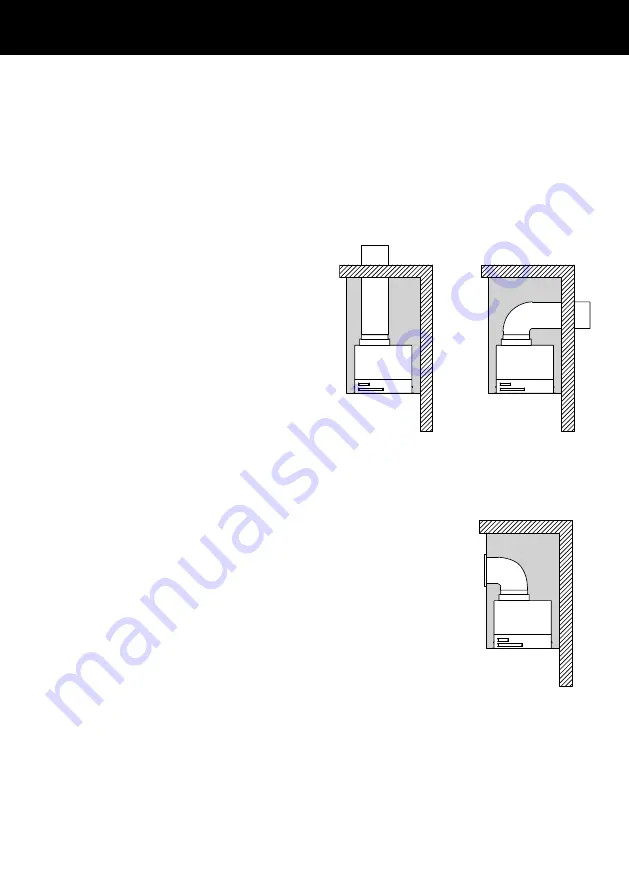
11
INSTALLATION INSTRUCTIONS
Venting requirements
IMPORTANT!
To reduce risk of fire and to properly exhaust air, be sure to duct air outside.
Do not vent exhaust air into spaces within walls or ceilings or into attics,
crawl spaces, or garages.
The range hood can be installed to operate with the exhaust air ducted externally
from the kitchen or with the exhaust air recirculating within the kitchen.
External venting
For best results:
z
Use the shortest and straightest duct
route possible. Elbows and transitions
increase noise and reduce air
flow efficiency.
z
Use rigid or semi-rigid ducting 150mm
diameter with a 160mm (minimum)
round hole in the wall or ceiling.
Note: In difficult installations where
flexible ducting is required ensure that
it is pulled tight.
Recirculating
This range hood can be installed to recirculate within
the kitchen where ducting externally is not practical.
The carbon filters fit on the blowers within the cavity of
the range hood and absorb odours as they pass over the
filters. The exhaust air then passes through the blower unit
and the diverter before recirculating back into the kitchen
from the side vents at the top of the chimney.
Note: A ducting hole is not required in the wall or ceiling
when installing a range hood to be recirculated.
To operate this range hood with the air recirculating the
following is required:
z
Carbon filters (refer to ‘Parts and accessories’).
z
150mm ducting. The ducting diameter must match
the diameter or the blower outlet.
z
150mm louvered vent.
Recirculate with carbon filters
Vent through roof
Vent through exterior wall
Summary of Contents for HP60IDCHX3
Page 2: ......
Page 4: ......
Page 15: ...13 INSTALLATION INSTRUCTIONS 360 1 360 2 360 360 360 360 3 4 5 6 ...
Page 23: ......










































